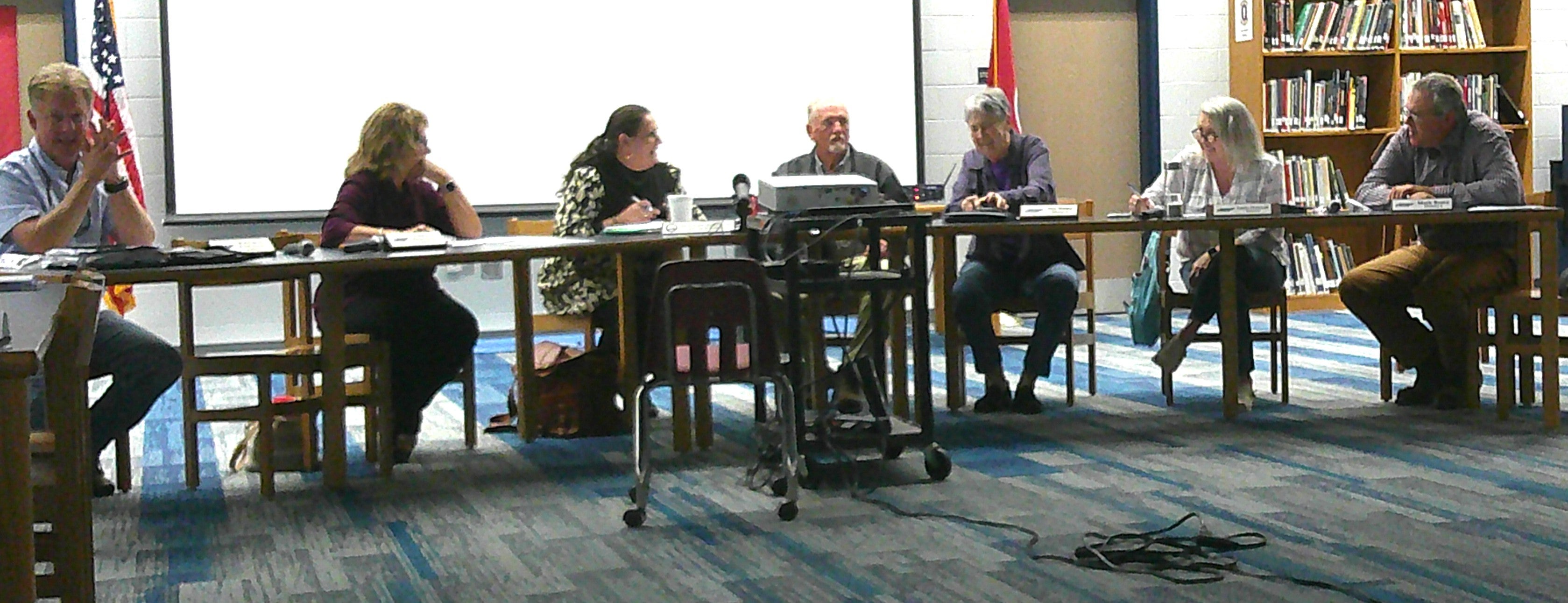Schools digging into stalled Springdale sewer line project
Published 1:26 pm Saturday, October 28, 2023

- Members of the Claiborne School Board planning their topics of discussion for the November meeting while in committee on Oct. 26. Photo by Jan Runions
|
Getting your Trinity Audio player ready...
|
The project to install a sewer line in the Springdale community is getting a look-see as the Claiborne School Board continues its dig into why the project has been in stall mode for nearly four years. County government was onboard with the project when it submitted an application in early 2020 for an Appalachian Regional Commission (ARC) grant.
At the time, Commissioner Zach Mullins, who was one of three sponsors of the grant resolution, said he felt it was “a 95 percent done deal.” Mullins said that after speaking with Nashville, he felt safe to assume the county would have 75-80 percent of the project paid for leaving “slim to nothing” for the county to pay.
That was then. In 2024 costs, the county will be facing inflationary prices. The question begs itself as to just why this project isn’t done and what exactly was the holdup?
Mullins had alerted the Claiborne Commission to what he characterized as the dire need in the Springdale community for an alternate wastewater process. He presented a bottle reportedly filled with tap water from a Springdale residence. The water inside the bottle had a definite dingy discoloration.
Mullins spoke of the “rusty” septic system, which was installed when the school was built in 1974.
“If this tank, which sits above-ground, does give out – right below from where this tank sits is a creek…This creek ultimately runs into Norris Lake. If this tank does give out, what kind of EPA fines are we looking at? Nobody’s going to want to fish in a Claiborne County septic tank. Nobody’s going to bring their jet skis and run up and down the lake. If that tank does rupture, where are we going to send 300 kids that go to Springdale School? Midway is overcrowded. SMMS is overcrowded. We would have to shut it down,” said Mullins, during the meeting held in January 2020.
The creek water moves along Lone Mountain and into the Clinch River, which the Claiborne Utility District draws from to provide city water, he said.
Mullins also had photos depicting floating, uncontained raw sewage.
At the time, the county was under a four-year plan to lower the ammonia levels in the existing septic system. The issue had first come to light in 2012.
In 2020 figures, the total project cost was estimated at $977,000. The cost has ballooned since then which could add another $400,000 or more to the bill. The question for the school district is, ‘from where will the additional funding come?’
Meredith Arnold, Director of Schools, said during the Planning Committee meeting on Oct. 26 that she is looking into alternate grants to pay for the project. Arnold had visited the septic system site with officials that she said had reassured her that there was “no immediate likelihood of a catastrophic damage” resulting from the system. She said the official had recommended welding which could be done in-house by maintenance.
Arnold did say she saw rusting above the waterline. She said the overall issue was characterized by the official on site as a “business decision” and that he said “it was not an immediate emergency type situation.”
She said she would prefer the original agreement between the Claiborne Utility District and the school system be hashed out. The agreement would involve the CUD installing a sewer line that would cover the school, residences and businesses within the Springdale community.
However, the cost quoted from the original agreement was considerably lower than the quote submitted by the CUD within the last two or three months, she said.
Arnold said she was anxious to share with the board just what she uncovered from her research into the timeline and paper trail connected with the sewer line project.
“I think that’s important for this board to see. And then you can make a healthy decision,” said Arnold. “When you look at the original written correspondence, the utility district was 100 percent onboard; had even written a letter of support of the project, at the beginning. And also, an additional letter saying that they would continue to support this project after its completion because it was such an economic boost to the status of the community.”
If the CUD declines the project, the school system could be faced with the responsibility for maintaining the sewer system. If the utility district does not participate in the financial end, it relinquishes any means by which it can charge sewer costs to those affected in the Springdale community, according to Arnold.
The school board will be pondering this issue during its annual retreat, to be held Dec. 1. The subject is expected to come up during the December school board meeting.
.





